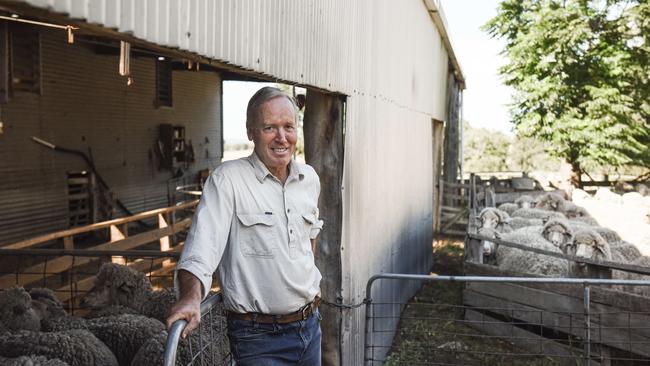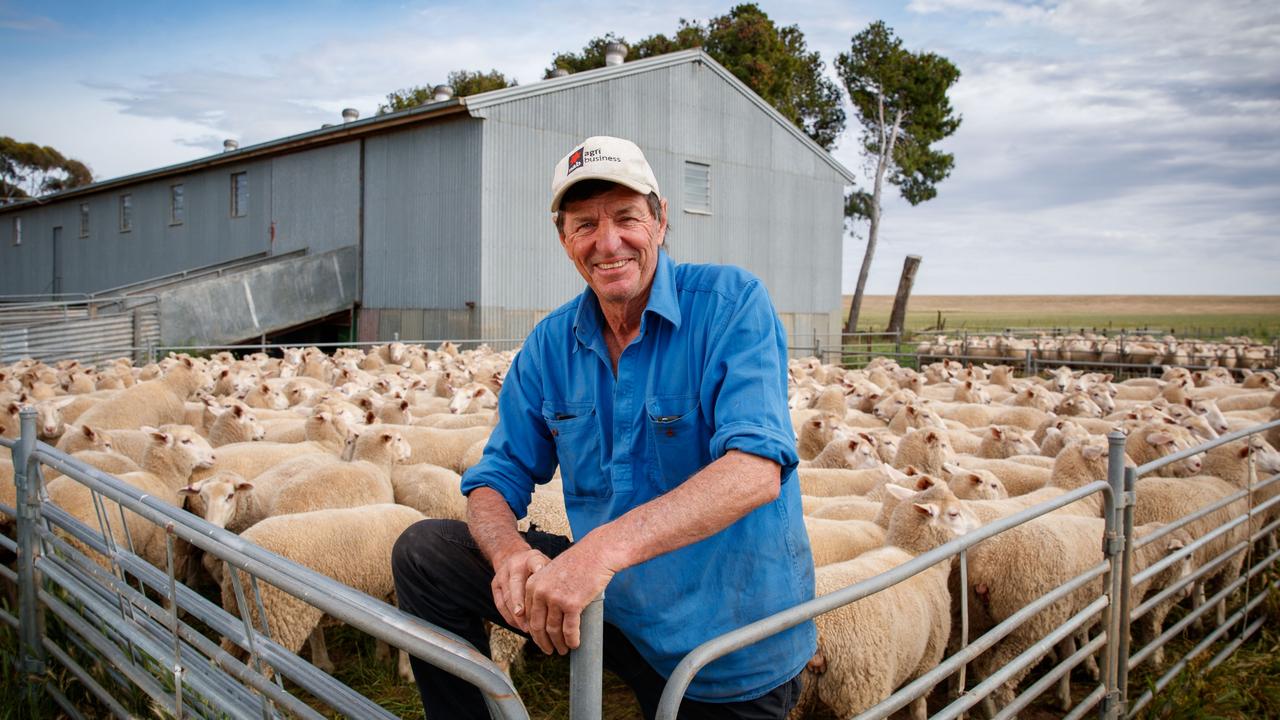Inspiration for innovation
Rick Robertson and wife Jenny say they have an ideology of openness and a willingness to embrace new ideas when making business decisions on farm.

ON the surface, the similarities between sowing crops and growing wool are few and far between.
But for East Gippsland wool and sheep producers Rick and Jenny Robertson, it’s by drawing inspiration from zero-till croppers who work with the earth instead of against it that has revolutionised the way they run their Merino operation.
A second-generation wool and sheepmeat farmer, Rick took over the 1000ha farm, home to their Gracemere Merino flock, at Bengworden from his father in 1989.
But it wasn’t until 2009, following a period of dry weather, that he and wife Jenny took stock of the way they were running their business and wondered if they could be doing things differently.
“That took us down a different path,” Jenny said.
“Now, after another dry period, we feel much more in control, our stress levels are much lower, and our balance sheets are a whole lot better … lots of people talk about production. But we look at it as what’s the profit at the end of it? If you’re doing it (a production-based system), but at a great cost, you’re only looking at things from one perspective.”
It’s a tactic that’s paid off, with their mob of 6500 dry sheep equivalents — about 35 per cent below normal stocking rates — producing an average fleece of 18.8 micron.
THREE-PRONGED APPROACH
RICK describes his farming philosophy as a “hat trick” of three key principles that he bases all decision making around: risk and profitability, the landscape, and animal welfare and performance.
The Robertsons deploy rotational grazing techniques, such as reserving 40 paddocks for one mob of ewes, 30 paddocks for one mob of weaners, and leaving about 800kg of dry matter/ha behind for up to 140 days.
Leaving the paddocks with ample grass instead of being stripped bare, along with using perennial pastures is key for Rick and Jenny in maintaining their flock. A variety of multispecies cover crops are direct drilled for grazing and to fatten stock with the aim to optimise animal performance, as well as providing good ground cover while increasing organic matter and carbon levels.
“We use contractors for sowing which is a quarter of the cost of owning late-model machinery,” Rick says.
It is also important that they match stocking rates to rainfall using grazing charts, and have agreed trigger points that allow Rick and Jenny to decide what to sell — and when — during dry periods.
It’s a savvy business decision too, at a quarter of the cost per kilogram of dry matter when compared with purchased feed.
“The growth rates of the young stock have been phenomenal,” Rick says.
“We don’t just feed ad hoc, it’s worked out by the number of megajoules of energy the stock need at certain growth rates, during pregnancy … and we feed accordingly.”
MANAGE MEANT
RICK says he aims for 100 to 120 per cent lambing each year by strategically managing breeders at key times of the season.
Scanning and small mob size for twins are key management practices, while early weaning is key to saving feed costs while minimising ewe draw in preparation for mating.
It allows the Robertsons to farm with precision and acuity, giving Rick the freedom to pursue his passion for genetics.
Rick’s goal is to genetically produce a sheep with the carcass of a Corriedale and the fleece of a Merino. In April this year ewes cut 6kg of 18.8 micron wool that averaged 103mm.
The Robertsons work closely with Pooginook Merino stud at Jerilderie in NSW and for the past five years have purchased rams at its annual production sale.
“I believe now you can have a meaty-type carcass, with good fleece on it,” Rick says, adding he selects genetics that will yield a plainer body, with more fat and muscle while being structurally correct. “Sheep sales are a strong part of the business now, it’s added a fair bit of cream. We are meat producers as well, but my great love is Merino breeding and wool, it always has been.”
When selecting rams for breeding, Rick only chooses rams with positive fat and muscle Australian Sheep Breeding Values. “That’s the critical thing that keeps the fertility up, and the durability in the stock during tough years,” Rick says.
“We’ve changed our breeding focus … wool production was the main driver. It used to be that about 80 per cent of our income came from wool. But that’s changed now, it’s closer to about a third being from sheep sales. So our emphasis is on fertility.”
About 60 per cent of stock is solely breeding stock.
The genomic DNA test flock profile is used to fine tune the breeding direction while taking out the phenotype effect.
BRAND STAND
THE Robertsons made the decision to breed a mulesed-free Merino, both for wool and meat production, with freeze branding used during this period of transition.
New stud sires must have a breech wrinkle score of two or less. Metacam analgesic is used when marking, a move that Rick says is best practice while also providing a market edge for wool sales.
“I’ve really noticed that we don’t have the tail in the young stock anymore that we once had,” Jenny says. “Rick has done well to keep the lambing percentages up … that means we have that young lot of stock always coming up, and keeping the turnover going.”
When it comes to working with the land to optimise production and quality, the Robertsons focus on a number of key tactics, taking inspiration from the emphasis on innovation and information favoured by many zero till grain growers in the north of Victoria.
The Robertsons attended the Victorian No Till conference in Shepparton last year and were impressed with the innovative way cropping farmers approached their businesses.
“We’re happy to learn,” Rick says. “We go to a lot of conferences, workshops, and field days. I just like to learn about how we can improve … we sort of go against the grain a bit.”
Jenny adds: “When we went to the no till cropping conference, they’d be talking about how they’re working with the soil and not against it, learning how the soil works, and how to optimise that. That’s when we get really good outcomes for our animals, and for our fibre. But you’re also getting more nutrients.”
It’s an ideology of openness and a willingness to embrace new ideas that they take inspiration from when making business decisions on farm.
“Rick has always tried to do his best at what he does. He’s always wanted to be a really good farmer,” Jenny says.



